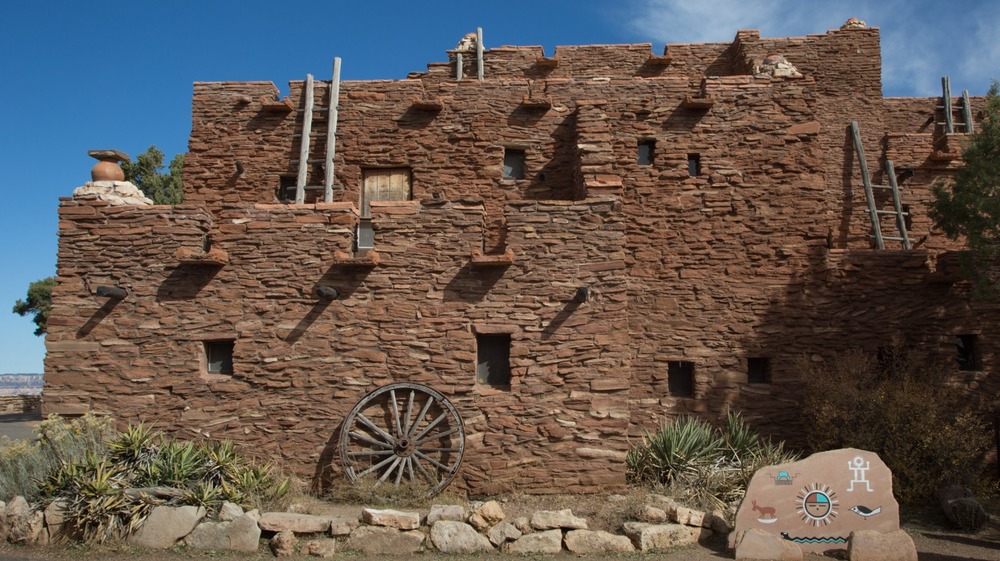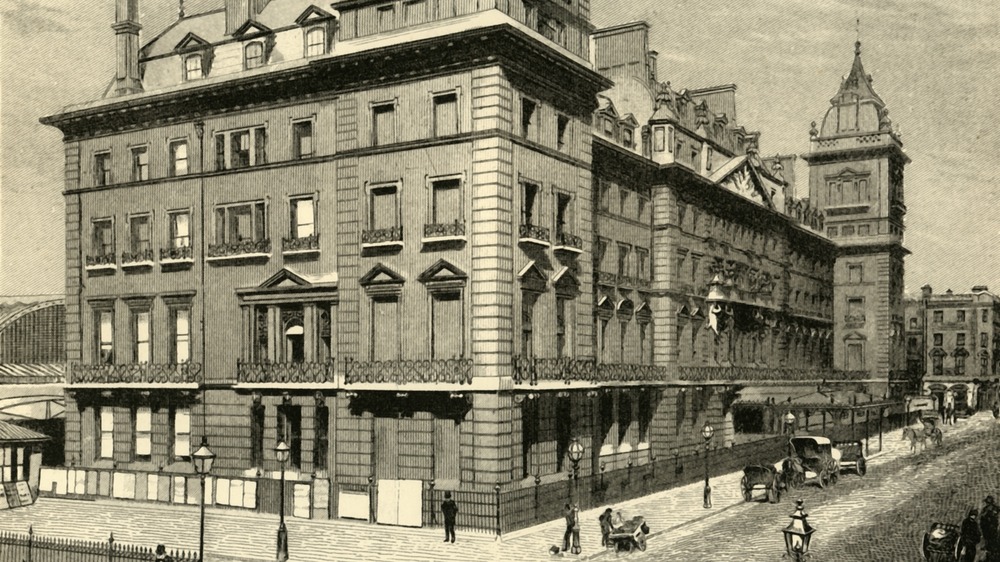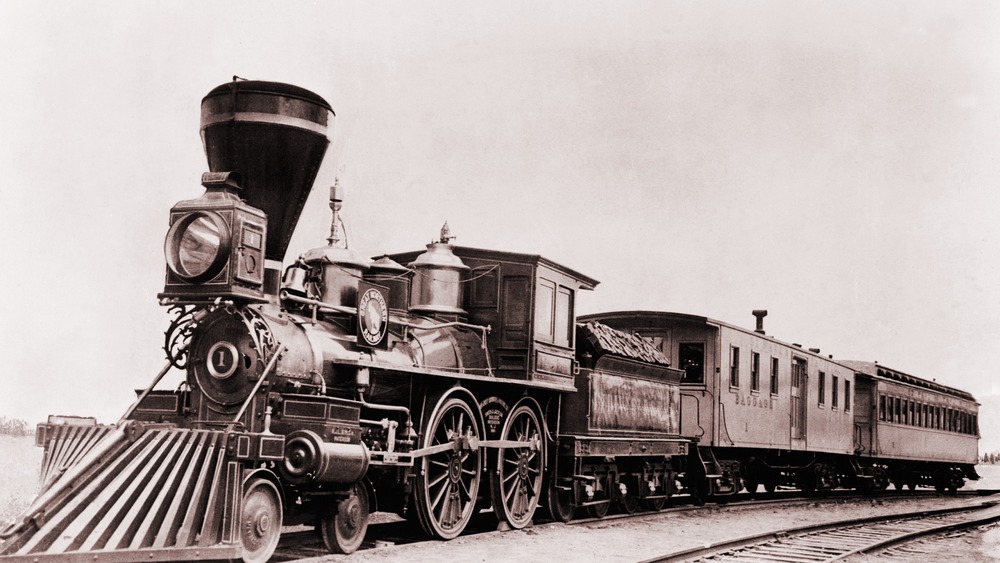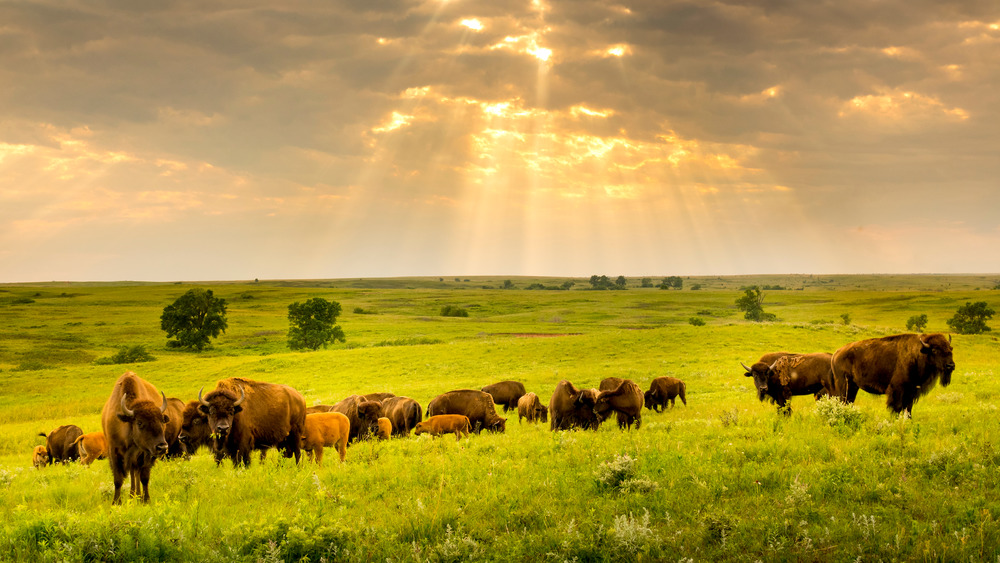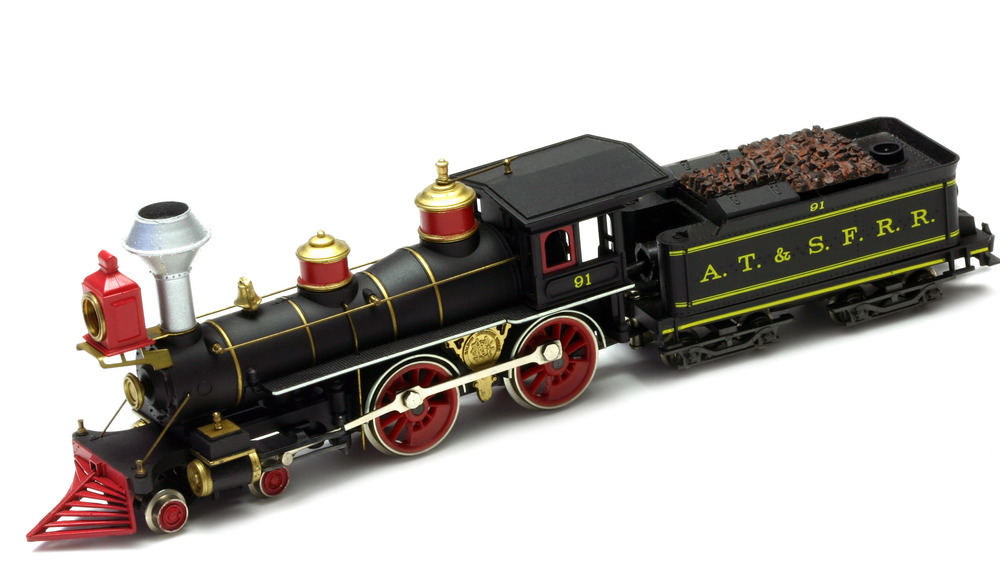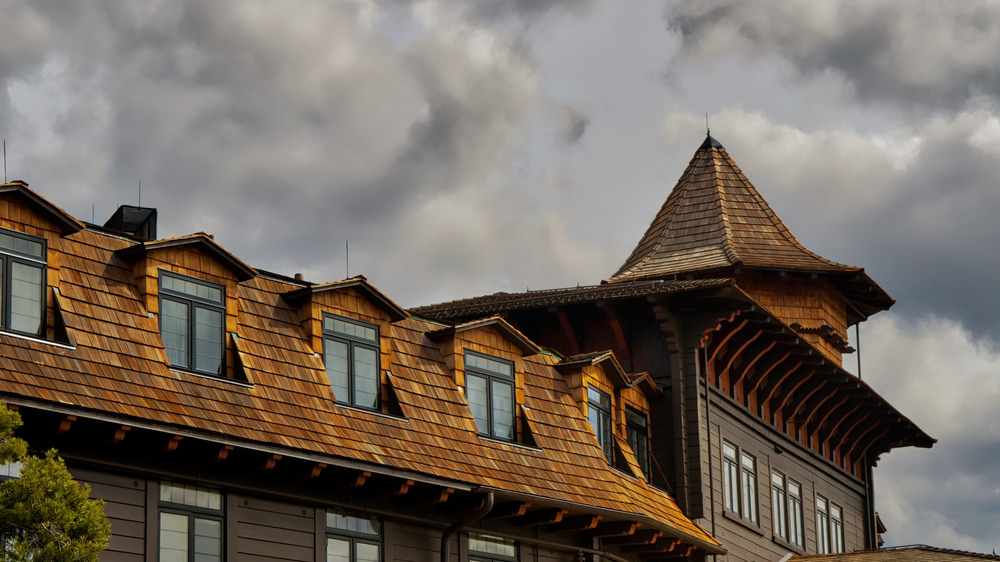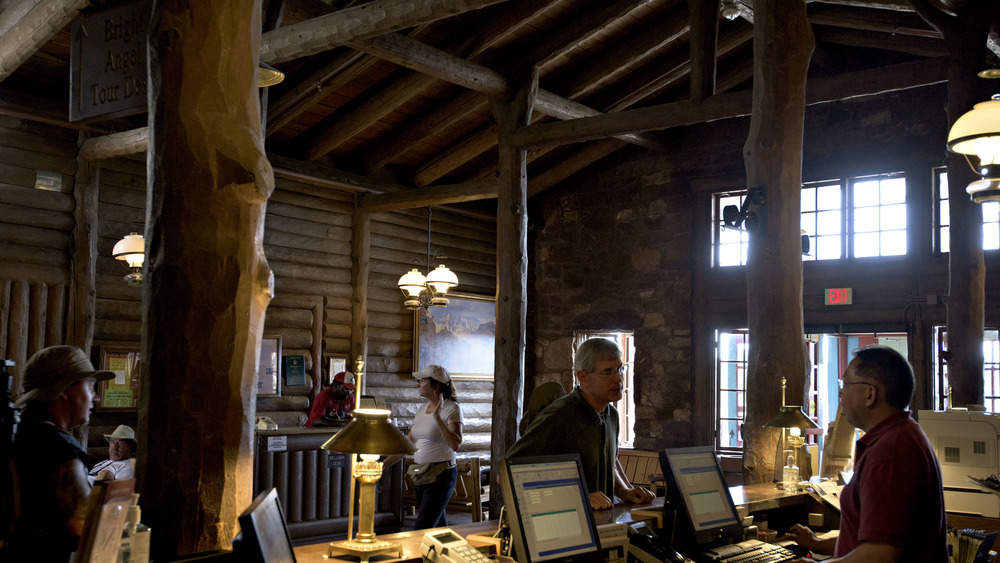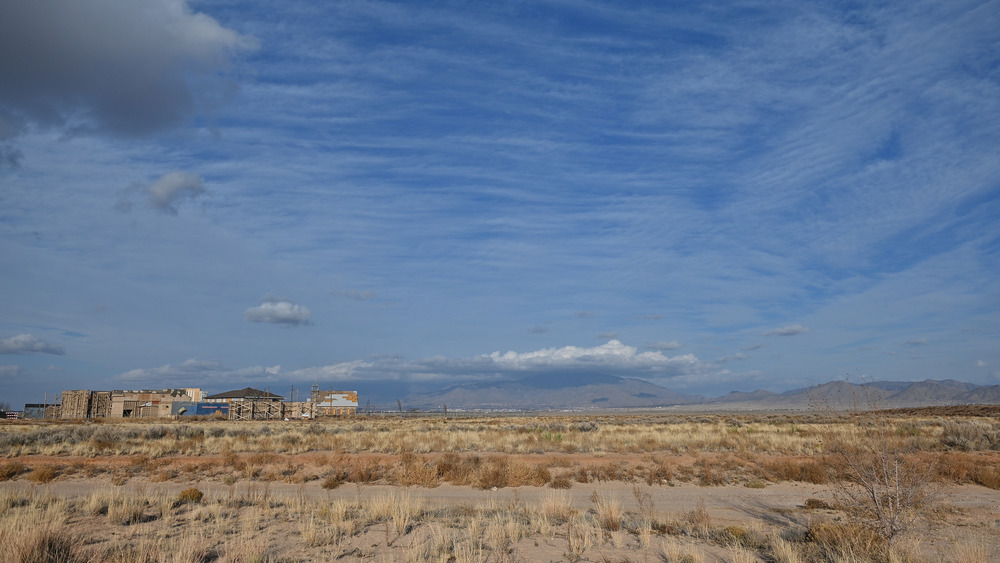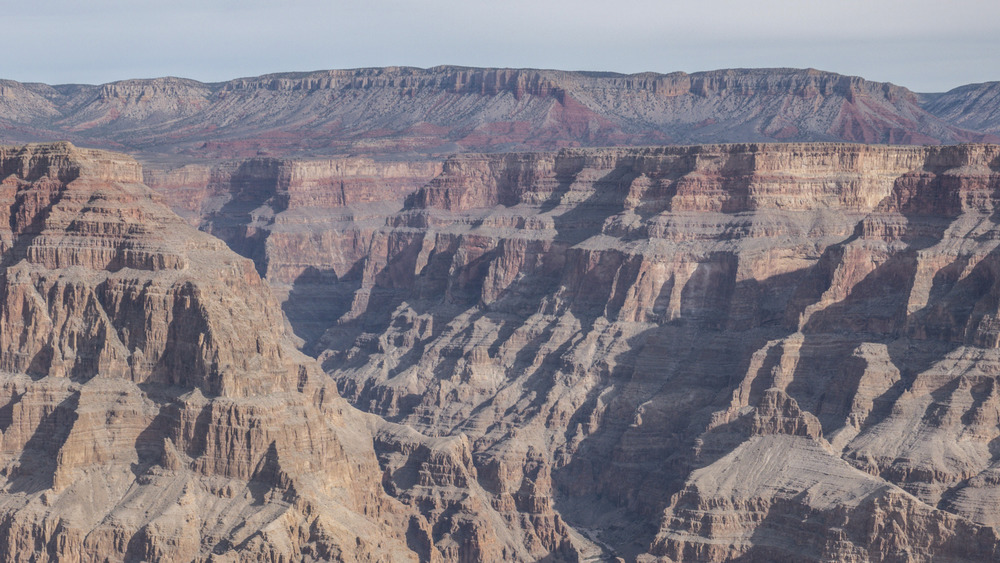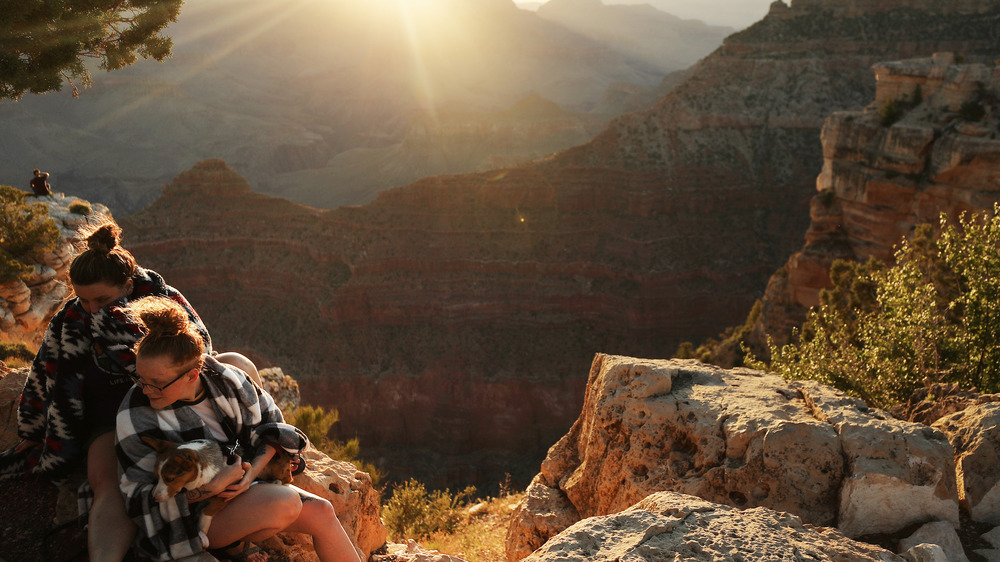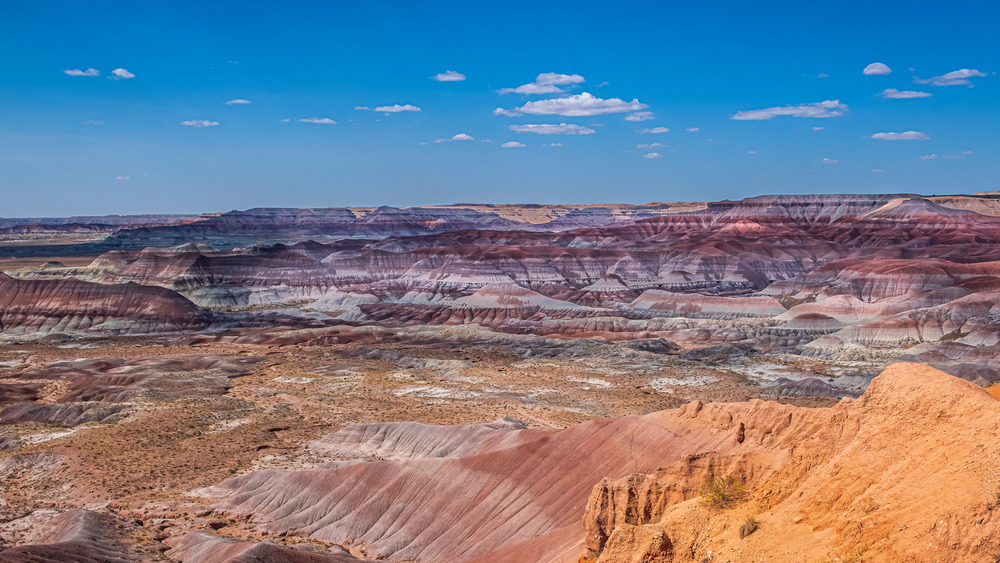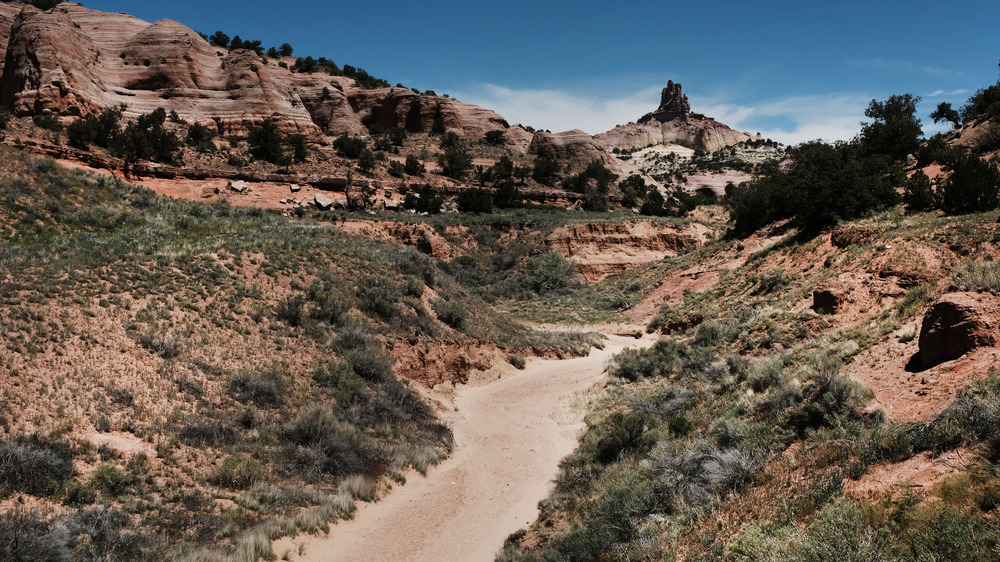The Incredible True Story Of The Man Who Created America's First Chain Restaurant
Frederick Henry Harvey was a born entrepreneur. However, unlike McDonalds' Ray Kroc, most people don't know his name or his company's mission. The Fred Harvey Company predominantly set out to sell people good food.
When traveling by train for work in Missouri and Kansas during the 1860s, Harvey noticed just how bad train food was. Having had experience both in food service and on trains, he set out to create a hospitality company that essentially became America's first chain restaurant and the epitome of service, according to Stephen Fried's Appetite for America: Fred Harvey and the Business of Civilizing the Wild West — One Meal at a Time.
Fred Harvey Houses were known for their punctuality, excellent food, and respectability. They became famous for their Harvey Girl waitresses, who expertly served crowds of people without dropping the china or spilling the soup. Harvey also became famous for bringing tourism to the southwestern United States. Architects Mary Colter and Charles Whittlesey designed several buildings for Grand Canyon tourism under the direction of the Fred Harvey Company. When Harvey died, his still-strong company lived on.
Harvey managed what was nearly impossible in the late 1800s — uniting a region of the widespread U.S. Here is the untold story of the man who emigrated to America and wound up capturing the soul of the Southwest with good food and hospitality.
Born in London, moved to America
Frederick Henry Harvey was born on June 27, 1835, to Charles Harvey, a Soho tailor, and Ann Harvey. His father was brought before the bankruptcy court in London when Fred Harvey was 8 years old, according to Fried's Appetite for America, though even before that the family had never been wealthy. Considering this background, it's not terribly surprising that Fred grew his eventual business as large as he could. With a wife and children to support, he didn't want to be as desperate as his father had been. Fred also had two younger sisters, Eliza and Anne, who he helped support as adults.
At the age of 17, Fred, already incredibly ambitious, left England for greener pastures, eventually arriving in New York (via Fried's Appetite for America). The idea of a restaurant where customers could order as they pleased was still a new concept, and Fred, interested in culinary novelties, sought out those businesses as a place to learn.
Restaurants and trains
Fred Harvey ended up in New York City, working as a dishwasher for Smith and McNeil's restaurant. After a year and a half of learning how to be in the service industry, he moved to St. Louis, heading up the dining room of the Merchants Dining Salon and Restaurant.
That business failed due to the St. Louis Massacre, an incident at the beginning of the American Civil War that greatly divided Missouri between Confederates and Union supporters. At least 28 people were killed (via My Civil War). Harvey then began working for Hannibal and St. Joseph Railroad as a ticket seller, according to Appetite for America. Harvey eventually took a second job with the Chicago, Burlington, and Quincy Railroad Company as general Western agent for freight trains.
Harvey kept careful note of everything going on with his current businesses and potential future opportunities. His datebook was full of entries noting the weather, his health, and the money spent for his household expenses, as well as business deals (via Appetite for America).
Harvey was very good at being a salesman but also at finding new ways to adapt different markets to the trains. For example, there was business to be made in shipping buffalo bones for china or fertilizer. The American government believed that there was less risk of attack by Native Americans if the buffalo were gone. Despite the awfulness of the business of selling parts of dead animals, Harvey managed to remain a gentleman throughout.
Fred Harvey got things moving in Kansas
As he rode the rails, Fred Harvey couldn't help but notice how bad the food was. He naturally had a weak constitution, but eating terrible food whenever he traveled didn't help. He came up with the idea of running an eating house for railroad passengers (via Appetite for America). Since he didn't want to lose or give up his day job, he started a new company with a partner — Jasper "Jepp" Rice. They began managing food service at three Kansas Pacific railroad eating houses. It did not go well.
Quickly, the pair realized that while they liked being friends, they couldn't stand being business partners together, each thinking the other wasn't handling enough. If that wasn't enough, their managers at the Kansas Pacific railroad were difficult to work with, being very particular about how materials were shipped, which meant tedious invoicing for each item.
Harvey pitched his eating house idea to the Chicago, Burlington, and Quincy Railroad Company, but they shot him down. Next, he turned to the Atchison, Topeka, and Santa Fe railway president, Charles Morse, who was on board.
Harvey started his own business by taking over the Topeka depot lunchroom of the Atchison, Topeka, and Santa Fe railway in January 1876, according to the Kansas Historical Society. Two years later, he opened a restaurant under his name in Florence, Kan. Another followed in Lakin, Kan. By the early 1880s, 17 of Harvey's hospitality businesses were open on the Santa Fe line.
Let's add genteel to chain restaurant
Wanting to keep his restaurants respectable, Fred Harvey hired young unmarried waitresses who wore uniforms and followed strict rules. They worked 12-hour days, often six to seven days a week, writes History Hoydens. Since trains ran on a specific schedule, everything had to be timed perfectly.
One example of achieving expert timing was the cup code. After one waitress asked a table what they wanted to drink, the cups were all placed in a particular way so that the next waitress, who poured drinks, would be able to tell what had been ordered without asking again (via Lesley Poling-Kempes' The Harvey Girls). Efficiency was key.
Due to the Santa Fe railway having their own line of refrigerator cars, the ingredients used by Harvey's restaurants were fresh and good quality (via Appetite for America). Though there weren't an outrageous number of options like there might be today, food at the Harvey Houses was reasonably priced for both local workers and travelers.
The company's dining rooms also had rules — men had to wear formal ties and coats to dine, for example. The staff needed to serve meals in just 30 minutes as well. Harvey was known to suddenly show up for surprise inspections at eating houses. He would completely overturn tables for mistakes. However, as he put it, it was their business to please people who would not be pleased (via Appetite for America). That was accomplished by being perfect.
The Harvey Houses
Fred Harvey's company eventually owned and operated Harvey Houses and hotels in 12 of the western states. The company owned 45 restaurants and 20 dining cars in 1901, when Fred Harvey died, according to the Kansas Historical Society.
A few of the chain Harvey Houses have been restored and continue to serve their communities, such as La Fonda on the Plaza in Santa Fe, N.M. However, most Harvey Houses closed throughout the 1930s, 40s, and 50s. The places that are still open are mainly either operating as hotels, such as La Fonda, or are part of the Grand Canyon Lodges, such as El Tovar or Hopi House.
The Harvey Houses were part of the era of train travel and the American tourism of the then-unknown Southwest. As trains began to be replaced by planes and cars, and as Americans got to know the whole of their country, the Harvey Houses started to shut down. Nonetheless, other aspects of the company, such as its architectural achievements and civilizing of the southwest, lived on.
Riding the Santa Fe
The Fred Harvey Company set up eating houses along most of the Atchison, Topeka, and Santa Fe Railway route. The Santa Fe railway had originally started in 1859 to connect Atchison and Topeka, Kan., with Santa Fe, N.M. (via Britannica). Being a shrewd businessman, Harvey set up good deals for himself and his company when working with the railway, which was one of the largest in the U.S. at the time.
For the towns along the rails, like Belen, N.M., where many men worked in the railroad yards, the possibility of fresh, good food was wonderful. And the fact that the wait staff were women made going to the local Harvey House for meals even better, says the Smithsonian Magazine.
The Santa Fe railway expanded to over 11,000 miles of track between 1895 and 1920, during the tenure of president Edward Payson Ripley, according to Britannica. In 1968, the Santa Fe railway became a subsidiary of Santa Fe Industries, Inc. It was then bought by Burlington Northern, Inc. in 1995 and took the name Burlington Northern Santa Fe Corporation.
The history of the Fred Harvey Company is still close to us, and an obvious way to see that is through the train corporations. The Santa Fe railway still exists, it's just buried in another company's name.
Mary Colter and the architecture of the Harvey Houses
Architect Mary Colter designed many of Fred Harvey's buildings, including the hotel La Posada and Hopi House at the Grand Canyon. Colter was fond of finding the natural beauty in a place and fitting it into her designs. She worked with the Fred Harvey Company for much of her career (via Pioneering Women of American Architecture).
Colter often used Southwest imagery in her designs, including Native American designs and construction techniques, since she wanted her buildings to fit the places they were built on. She was originally hired by Herman Schweizer, Harvey's chief buyer of Native American art, to design a space in Albuquerque's Alvarado Hotel's Indian Department. That first design grew into a long partnership, according to Northern Arizona University's Branding the Southwest exhibit.
One of Colter's best-known design features was the line of ceiling beams, which can be seen in the dining room of the Alvarado Hotel, as well as the main salesroom at Hopi House (via NAU's Branding the Southwest).
Colter retired from both architecture and the Fred Harvey Company in 1948. She had been with the company for 46 years. Colter's desire to keep her work authentic helped the company as a whole to attract attention to the Native American work she was borrowing, though that subject is up for debate.
Civilizing the western U.S.
Fred Harvey's son Ford helped create the Indian Detours venture in 1915. The Detours allowed tourists to visit Native American locales, as well as natural places in the area surrounding the Alvarado Hotel in Albuquerque (via NAU's Branding the Southwest).
Prior to the start of the Indian Detours, one of Harvey's daughters, Minnie Huckel, and her husband, J. F. Huckel, prompted the Fred Harvey Company to begin the Indian Department, according to NAU's Branding the Southwest. Eventually this section of the company came to be known for its purchase and protection of Native American art and artifacts.
The Grand Canyon also became a place for the Fred Harvey Company to build upon. The Grand Canyon is one of America's great natural wonders, but it wasn't known to most Americans back east. If you want people to see America, you have to convince them that there is something worth seeing. America was marketable, and that was one of Harvey's specialities.
The Grand Canyon
Mary Colter took charge of many of the attractions at the Grand Canyon, including Hopi House and Bright Angel Lodge. The El Tovar hotel, designed by Charles Whittlesey, chief architect of the Santa Fe Railway, sits right at the edge of the Grand Canyon and is still in operation (via Grand Canyon Lodges).
When he saw it in 1903, President Teddy Roosevelt called the Grand Canyon one of America's great wonders, according to NAU's Branding the Southwest. The president's enthusiasm for conservationism and the national parks system certainly helps explain why the Grand Canyon was added to that list in 1919. Many Grand Canyon stakeholders, including Ford Harvey, also encouraged giving the Grand Canyon national parks status. The Fred Harvey Company's efforts, both business and architectural, helped support many tourists' decisions to visit the Grand Canyon.
By the time World War II hit, travel to Europe was not necessarily a good idea, so American tourists began to explore their own country, including its national parks.
Fred, Ford, Barbara and Byron
Fred Harvey was married twice, first to Ann Harvey, a Dutch woman whom he met during a trip back to England. After Ann died in childbirth, Harvey married Barbara Mattas, who went by Sally, and had six children with her, including sons Ford and Byron, who helped run the company after his death, writes Stephen Fried in Appetite for America.
When Fred Harvey was still selling tickets and working as a freight agent, he spent most of his time out on the road while his family was back in Leavenworth, Kan. His wife Sally enjoyed entertaining when he was home, however.
Ford Harvey helped run the company after his father's death in 1901, focusing particularly on the Indian Detours in New Mexico and the tourism at the Grand Canyon. It was granted national park status in 1919, and Ford convinced the National Park Service to allow his family's company to operate the park's tourist business. Other family members were not quite as involved in running everything but were willing to assist, such as daughter Minnie Huckel, who had previously established the Indian Department.
As of 1962, the Museum of Northern Arizona in Flagstaff holds the artwork and belongings fo Katherine Harvey, who was Fred's granddaughter (via NAU's Branding the Southwest and Stephen Fried).
The company carries on
During World War II, Harvey Houses throughout the western U.S. reopened and fed hungry troops as they made their way across the country. Former Harvey Girls put their uniforms on again and were able to share that legacy with their own daughters (via The Harvey Girls).
In 1968, the Fred Harvey Company was purchased by Amfac Corporation, now named Xanterra Parks and Resorts. Xanterra continues to run the Fred Harvey Company buildings at the Grand Canyon.
Xanterra continued to grow its own company throughout the decades, with acquisitions of hotels and restaurants. Since adding TW Recreational Services in 1995, the company is the largest U.S. concessionaire, including for the state parks, according to Xanterra.
One could assume that Fred Harvey, with his ambition and desire for new opportunities, would very much appreciate that his company is now part of the largest concession holder in America. So much time has passed since 1876, and yet Fred Harvey can still be recognized for changing America.
Fred Harvey's legacy
Though many of the Harvey Houses have closed, La Posada was restored and remains open in Winslow, Ariz. Xanterra Parks and Resorts maintains the history of the company and its presence at the Grand Canyon. Ultimately, Fred Harvey is credited as the creator of the first chain restaurant.
You can't have train travel without wanting the entire experience to be worth it, including good food. That's where Harvey came in. However, you can't have food without bringing in people. Those already living in the southwestern U.S. were introduced to those from the midwest or east, and Harvey Girls from midwestern states like Kansas had the first big adventure of most of their lives.
Harvey also brought Native American culture and art into the mainstream by encouraging its preservation. It's true that others might phrase it as exploitation, however, as Harvey was a white Englishman using Indigenous culture and work to make a profit.
On the other hand, as a 1950s historian put it, according to Appetite for America, "More than any single organization, the Fred Harvey System introduced America to Americans."
